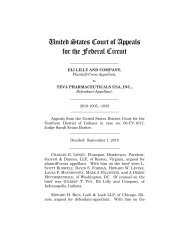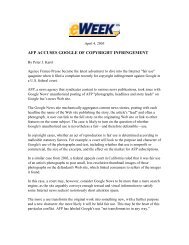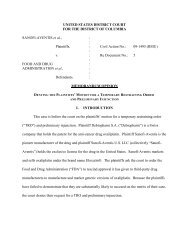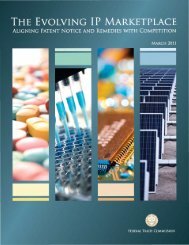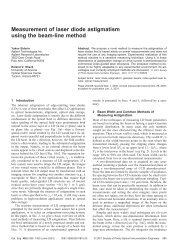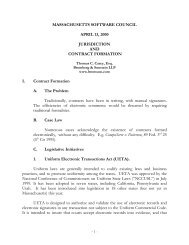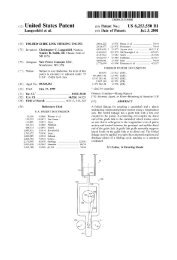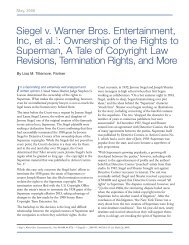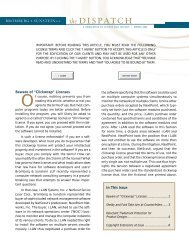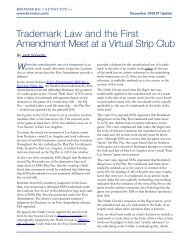Gucci America Inc. v. Frontline Processing Corp
Gucci America Inc. v. Frontline Processing Corp
Gucci America Inc. v. Frontline Processing Corp
You also want an ePaper? Increase the reach of your titles
YUMPU automatically turns print PDFs into web optimized ePapers that Google loves.
Case 1:09-cv-06925-HB Document 42 Filed 06/23/2010 Page 16 of 24<br />
1098, 1113 (N.D. Cal. 2008) (“off-hand references to customers as ‘partners’ is insufficient to<br />
exhibit the type of behavior and relationship that can be considered an actual or apparent<br />
partnership.”). While Defendants may have sufficient control over the sale of counterfeit goods<br />
to support contributory liability, see infra, the facts alleged do not support an inference that they<br />
had the type of control over a company like Laurette as a whole, i.e. akin to joint ownership,<br />
necessary for vicarious liability.<br />
3. Contributory Liability<br />
<strong>Gucci</strong>’s only plausible theory of liability here is contributory trademark infringement.<br />
The Supreme Court has determined that liability can extend “beyond those who actually mislabel<br />
goods with the mark of another.” Inwood Lab., <strong>Inc</strong>. v. Ives Lab., <strong>Inc</strong>., 456 U.S. 844, 853 (1982).<br />
There, a drug manufacturer sold generic versions of a certain brand-name drug in identically<br />
colored pill capsules, with the knowledge that pharmacists would place the pills in brand-name<br />
packaging. In this context, the Court held: “if a manufacturer or distributor intentionally induces<br />
another to infringe a trademark, or if it continues to supply its product to one whom it knows or<br />
has reason to know is engaging in trademark infringement, the manufacturer or distributor is<br />
contributorially responsible for any harm done as a result of the deceit.” Id. at 853-54; see also<br />
eBay, 600 F.3d at 104. As the Seventh Circuit noted, however, the Supreme Court’s test for<br />
contributory liability is not as easily applied to service providers as it is to a manufacturer. See<br />
Hard Rock, 955 F.2d at 1148 (“it is not clear how the doctrine applies to people who do not<br />
actually manufacture or distribute the good that is ultimately palmed off as made by someone<br />
else”); see also Tiffany <strong>Inc</strong>. v. eBay, <strong>Inc</strong>., 576 F. Supp. 2d 463, 504 (S.D.N.Y. 2008) (reversed on<br />
other grounds). While the “intentional inducement” prong of the Inwood test still applies, see<br />
eBay, 600 F.3d at 106, courts have crafted a slightly different test for service providers that<br />
“continue[] to supply its [services] to one whom it knows or has reason to know is engaging in<br />
trademark infringement.” Inwood, 456 U.S. at 853. To avoid imputing liability on truly<br />
ancillary figures like a “temporary help service” that may set up a flea market stand for a<br />
counterfeiting merchant, see Hard Rock, 955 F.2d at 1148, courts in other circuits have<br />
determined that a plaintiff must also show “direct control and monitoring of the instrumentality<br />
used by a third party to infringe the plaintiff’s mark.” See, e.g., Perfect 10, 494 F.3d at 807;<br />
Lockheed Martin <strong>Corp</strong>. v. Network Solutions, <strong>Inc</strong>., 194 F.3d 980, 984 (9th Cir. 1999). While the<br />
Second Circuit has yet to directly contemplate the validity of this modified part of the Inwood<br />
16



